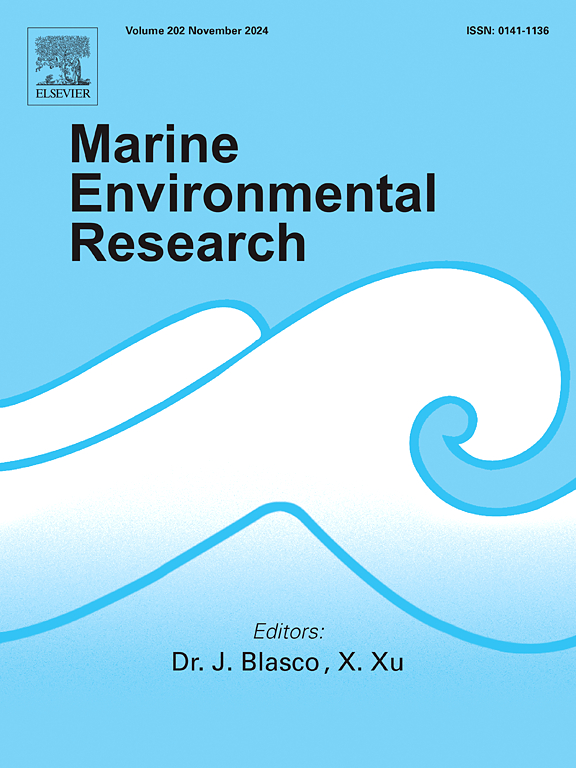Changes in macrozoobenthic assemblages of a coastal lagoon in the context of long-term human pressures and a eutrophication process
IF 3
3区 环境科学与生态学
Q2 ENVIRONMENTAL SCIENCES
引用次数: 0
Abstract
Coastal lagoons have long been perceived as simple, uniform and naturally stressed habitats, but recent research reveals that these ecosystems may be more complex, heterogeneous, and structured than anticipated, with an unexpected homeostatic and resilience capacity to respond to anthropogenic pressures. In addition, they are considered among the ecosystems with the highest biological productivity and among the most valuable in terms of socioeconomic importance. However, they face numerous challenges and an almost general lack of planning that hinders effective protection against anthropogenic pressures like agriculture, fishing, aquaculture, mining, tourism, coastal works, industrial pollution or eutrophication. This study represents a long-term analysis of changes in the composition and structure of the macrozoobenthic assemblages of the main habitats of the Mar Menor coastal lagoon, and their response to a severe eutrophic break episode, framed in the eutrophication process and human pressures that the lagoon has been suffering for the last 40 years.
Four time periods have been studied, since the 1980s, established as a reference for the quality of lagoon benthic communities. 99 taxa (3 Phyla, 1 Class and 95 Families) have been identified. The main environmental characteristics and assemblage descriptors in the seven more representative hard and soft bottom habitats of the lagoon have served to discuss the process of change that they have been undergoing and their spatiotemporal variability.
The dynamics of the communities is the result of multiple processes that interact with human impacts. The mechanisms that have permitted maintaining the ecosystem integrity for more than two decades of nutrient input are mainly based on the channelling of primary production towards benthic communities, and the export of excess production. During the periods of high and more or less abrupt increases in the input of nutrients, the ecosystem responds by increasing the populations of some species and trophic strategies in a sequence of filter-feeders, herbivorous and deposit feeders. All this in a complex scenario of spatial and temporal heterogeneity of the environmental conditions and biological assemblages, and species replacement in a framework of restricted connectivity and random colonization from the open sea.
求助全文
约1分钟内获得全文
求助全文
来源期刊

Marine environmental research
环境科学-毒理学
CiteScore
5.90
自引率
3.00%
发文量
217
审稿时长
46 days
期刊介绍:
Marine Environmental Research publishes original research papers on chemical, physical, and biological interactions in the oceans and coastal waters. The journal serves as a forum for new information on biology, chemistry, and toxicology and syntheses that advance understanding of marine environmental processes.
Submission of multidisciplinary studies is encouraged. Studies that utilize experimental approaches to clarify the roles of anthropogenic and natural causes of changes in marine ecosystems are especially welcome, as are those studies that represent new developments of a theoretical or conceptual aspect of marine science. All papers published in this journal are reviewed by qualified peers prior to acceptance and publication. Examples of topics considered to be appropriate for the journal include, but are not limited to, the following:
– The extent, persistence, and consequences of change and the recovery from such change in natural marine systems
– The biochemical, physiological, and ecological consequences of contaminants to marine organisms and ecosystems
– The biogeochemistry of naturally occurring and anthropogenic substances
– Models that describe and predict the above processes
– Monitoring studies, to the extent that their results provide new information on functional processes
– Methodological papers describing improved quantitative techniques for the marine sciences.
 求助内容:
求助内容: 应助结果提醒方式:
应助结果提醒方式:


